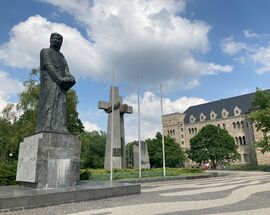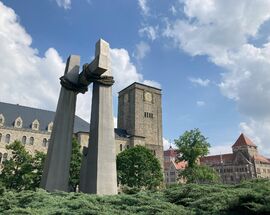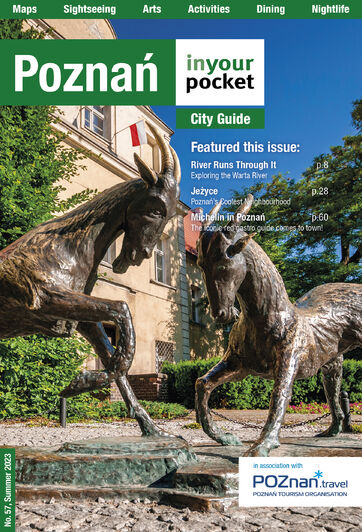Mickiewicz Square
Notably, Wielkopolska is the only region within present-day Poland that Mickiewicz ever visited, passing through Poznań in 1831 en route to join the November Uprising against Russian rule. His failure to reach the front lines before the insurrection’s collapse deeply influenced his greatest literary works, which denounce imperialism and elevate the Polish struggle for independence into national myth.
As symbolic as the Mickiewicz monument is, it's actually oversahdowed by the Monument to the Victims of June 1956 - a soaring tribute to the first major uprising against communist rule in Poland. Sparked by employees of Poznań’s Cegielski factories protesting poor conditions and unfair wages, a worker demonstration on June 28, 1956, quickly escalated into a massive anti-communist movement involving over 100,000 citizens. Although brutally suppressed by the state, resulting in at least 70 deaths and hundreds of injuries, the uprising marked a turning point in Polish history - exposing public resistance to the regime and inspiring future movements across the Eastern Bloc. Those eager to learn more should visit the 1956 Uprising Museum, located just metres away in the Imperial Castle
Mickiewicz Square is framed by some of the district’s most important architecture: the Imperial Castle to the west, Collegium Minus to the east, the Grand Theatre to the north, and the Poznań Philharmonic and Post Office buildings to the south. Although all of these monumental edifices, and the square itself, were once representative of Germany's imperial power, today this space is deeply tied to Polish identity, memory and public life, hosting ceremonies, protests, concerts and more throughout the year.
Associated Venues
/poznan/adam-mickiewicz-monument_36965v
Though vastly overshadowed by the Poznań Uprising Monument (see 1956 Uprisin




Radosław Maciejewski (2)-1_m.jpg)

Comments